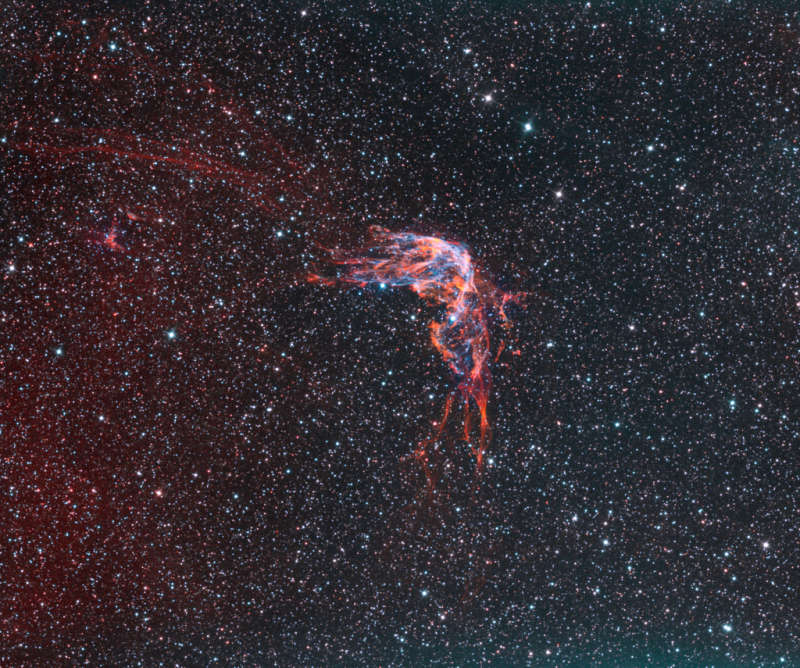
|
Credit & Copyright: Martin Pugh
Explanation:
In 185 AD,
Chinese astronomers
recorded the appearance of a new star in the Nanmen asterism.
That part of the sky is
identified with Alpha and Beta Centauri on modern star charts.
The new star was visible for months and is thought to be the earliest
recorded supernova.
This deep image shows emission nebula RCW 86,
understood to be the remnant of that stellar explosion.
The narrowband data trace gas ionized by the still
expanding shock wave.
Space-based images
indicate an abundance of the element iron
and lack of a neutron star or pulsar
in the remnant,
suggesting that the original supernova was Type Ia.
Unlike the core collapse
supernova explosion of a massive star, a
Type Ia supernova
is a thermonuclear
detonation on a a white dwarf
star that accretes material from a companion in a binary star system.
Near the plane of our
Milky Way
galaxy and larger than a full moon on the sky this supernova remnant
is too faint to be seen by eye though.
RCW 86 is some 8,000 light-years distant and around 100 light-years across.
|
January February March April May June July August September October November December |
| |||||||||||||||||||||||||||||||||||||||||||||||||||||||
NASA Web Site Statements, Warnings, and Disclaimers
NASA Official: Jay Norris. Specific rights apply.
A service of: LHEA at NASA / GSFC
& Michigan Tech. U.
Based on Astronomy Picture
Of the Day
Publications with keywords: supernova remnant
Publications with words: supernova remnant
See also:
- APOD: 2025 October 1 Á NGC 6960: The Witchs Broom Nebula
- APOD: 2025 June 9 Á Between Scylla and Charybdis: A Double Cosmic Discovery
- Supernova Remnant Cassiopeia A
- APOD: 2025 January 8 Á Supernova Remnants Big and Small
- APOD: 2024 September 18 Á The Mermaid Nebula Supernova Remnant
- APOD: 2024 April 16 Á Filaments of the Vela Supernova Remnant
- APOD: 2024 April 3 Á Unusual Nebula Pa 30
